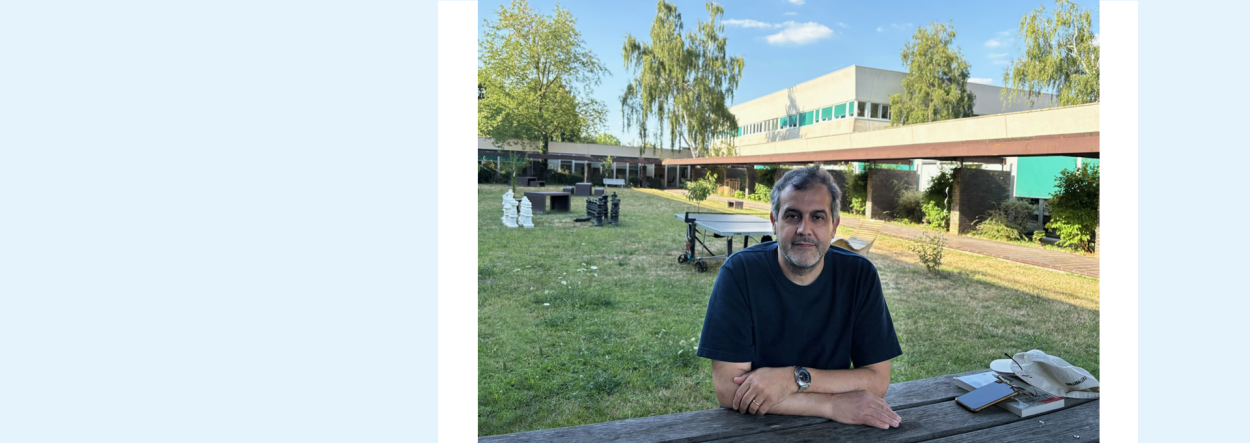Chilean researcher Sergio Rica from partner university PUC visits l’X

Before joining the faculty of Pontificia Universidad Católica de Chile, where he has been teaching since 2021, Sergio Rica worked in France for over twenty years. His first meeting with Christophe Josserand, Deputy Director of the Hydrodynamics Laboratory (LadHyX) and a researcher at École Polytechnique and CNRS, dates back to his doctoral studies in theoretical physics at the Université de Nice Sophia Antipolis1 and laid the foundation for their productive and regularly renewed scientific collaboration.
The possible singularity in the Euler equations is at the center of their current joint research project, and Sergio Rica benefited from funding through the Erasmus+ program to visit École Polytechnique in early July 2025 to advance their joint research within the Hydrodynamics Laboratory (LadHyX)2.
Sergio Rica appreciates finding "the atmosphere of fruitful discussion and camaraderie" he had already experienced during his previous stay as a Gaspar Monge Visiting Professor from November 2018 to February 2019. It was a discussion with Christophe Josserand and other researchers from the LadHyX laboratory during this previous stay that led to the formulation of the current research topic. "The possibility of hosting foreign researchers in our laboratories is crucial to maintaining existing collaborations and launching new research topics that often emerge from multiple discussions and exchanges", emphasizes Christophe Josserand.
"The singularity in the Euler equations has not yet been demonstrated, and the question of the mathematical regularity of the Euler equations has been open for more than 250 years", explains Sergio Rica. "We advance the research through evidence."
Another topic he studies with the researcher Christophe Josserand at École Polytechnique is the mechanism of dissipation in superfluids. Discovered in 1937 by Piotr Kapitsa, whose correspondence Sergio Rica is currently reading, superfluidity refers to the state of matter in which it behaves like a fluid devoid of any viscosity. While a superfluid can flow at moderate speeds without dissipation and thus without stopping, Sergio Rica explains that "beyond the critical velocity, a superfluid becomes viscous". Their research project focuses on this critical velocity.
Their joint research is a telling example of a sustained international scientific collaboration for over thirty years. "I met Christophe Josserand in 1993 when I was finishing my thesis under the supervision of Yves Pomeau, and he was starting his. While I was showing him my work, we began to exchange ideas and work on joint projects up to the present day." Their work has resulted in the publication of close to thirty scientific articles in prestigious journals.
While this result demonstrates that it is possible to collaborate successfully while being based in distant locations, Sergio Rica emphasizes that "it is important to be able to meet regularly to discuss certain points more in-depth". Christophe Josserand insists that "although we know each other well and manage to exchange regularly via video conference, face-to-face discussions are crucial as they allow for more direct and fruitful exchanges".
Following Christophe Josserand's stay in Chile last year, Sergio Rica spent a week on campus in early July 2025, supported by the Erasmus+ program. Beyond the joint research project, Sergio Rica also contributes to reflections on other initiatives to bring PUC and École Polytechnique closer together, such as new formats for student mobility between the two institutions.
1 today Côte d’Azur University
2 LadHyX : a joint research unit CNRS, École Polytechnique - Institut Polytechnique de Paris
 Support l'X
Support l'X